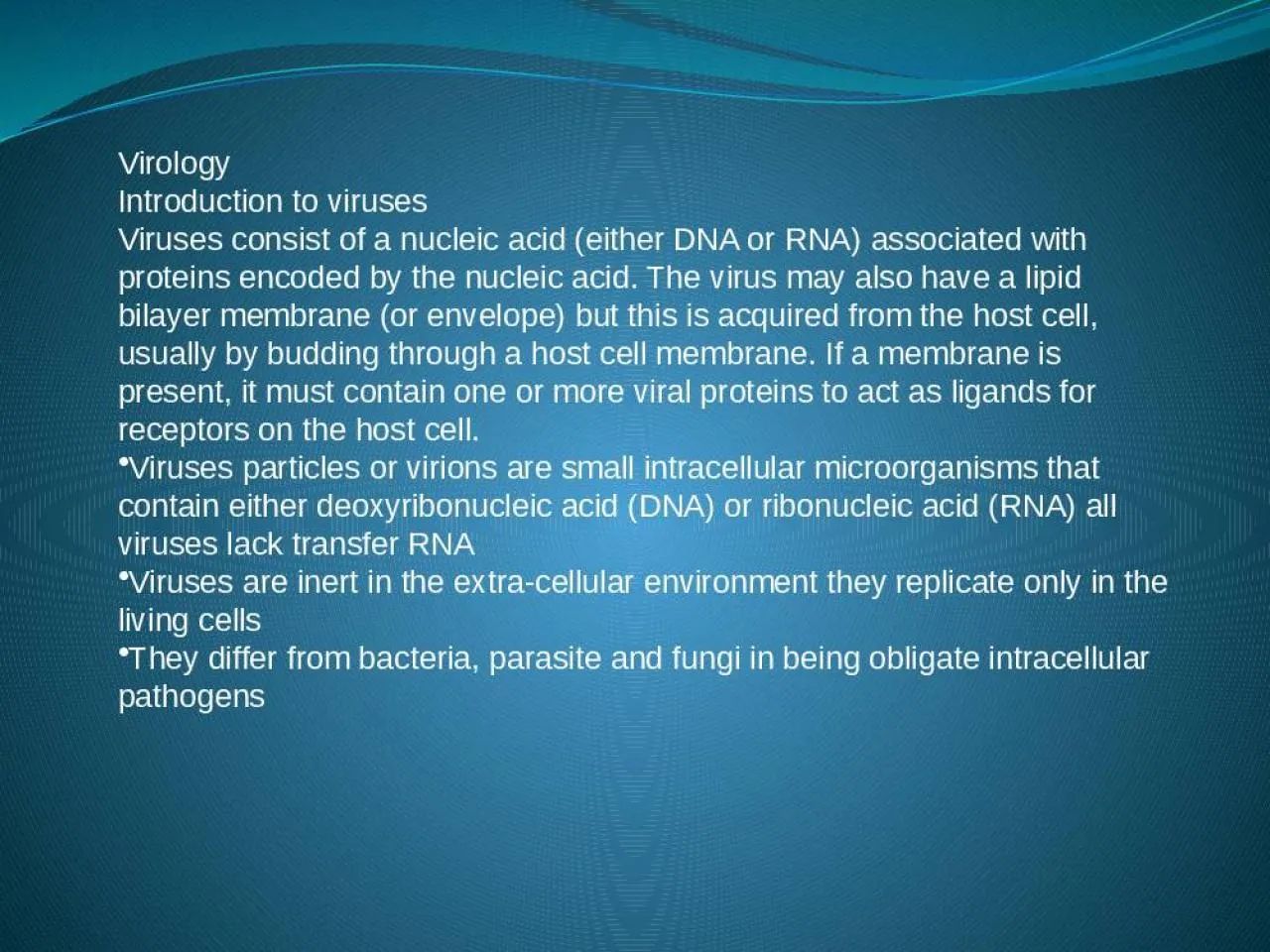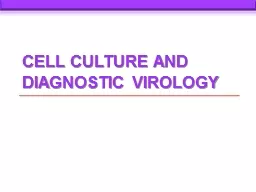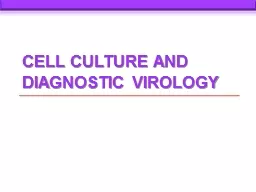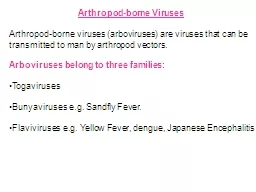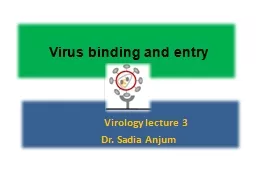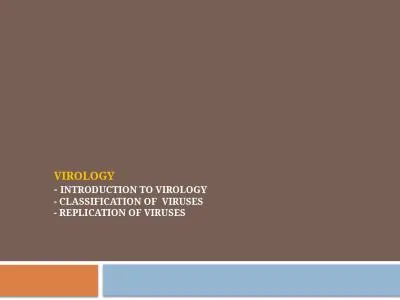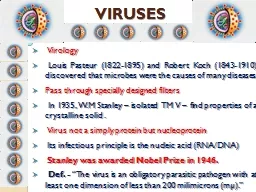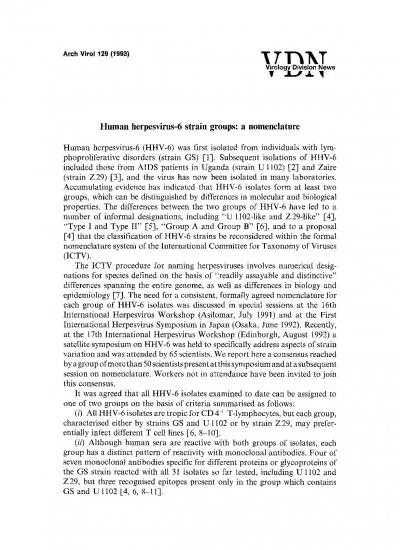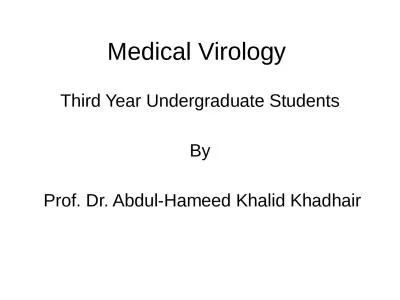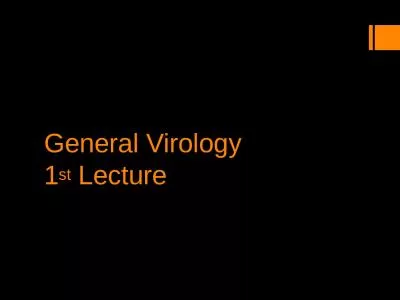PPT-Virology Introduction to viruses
Author : susan | Published Date : 2022-02-15
Viruses consist of a nucleic acid either DNA or RNA associated with proteins encoded by the nucleic acid The virus may also have a lipid bilayer membrane or envelope
Presentation Embed Code
Download Presentation
Download Presentation The PPT/PDF document "Virology Introduction to viruses" is the property of its rightful owner. Permission is granted to download and print the materials on this website for personal, non-commercial use only, and to display it on your personal computer provided you do not modify the materials and that you retain all copyright notices contained in the materials. By downloading content from our website, you accept the terms of this agreement.
Virology Introduction to viruses: Transcript
Download Rules Of Document
"Virology Introduction to viruses"The content belongs to its owner. You may download and print it for personal use, without modification, and keep all copyright notices. By downloading, you agree to these terms.
Related Documents

